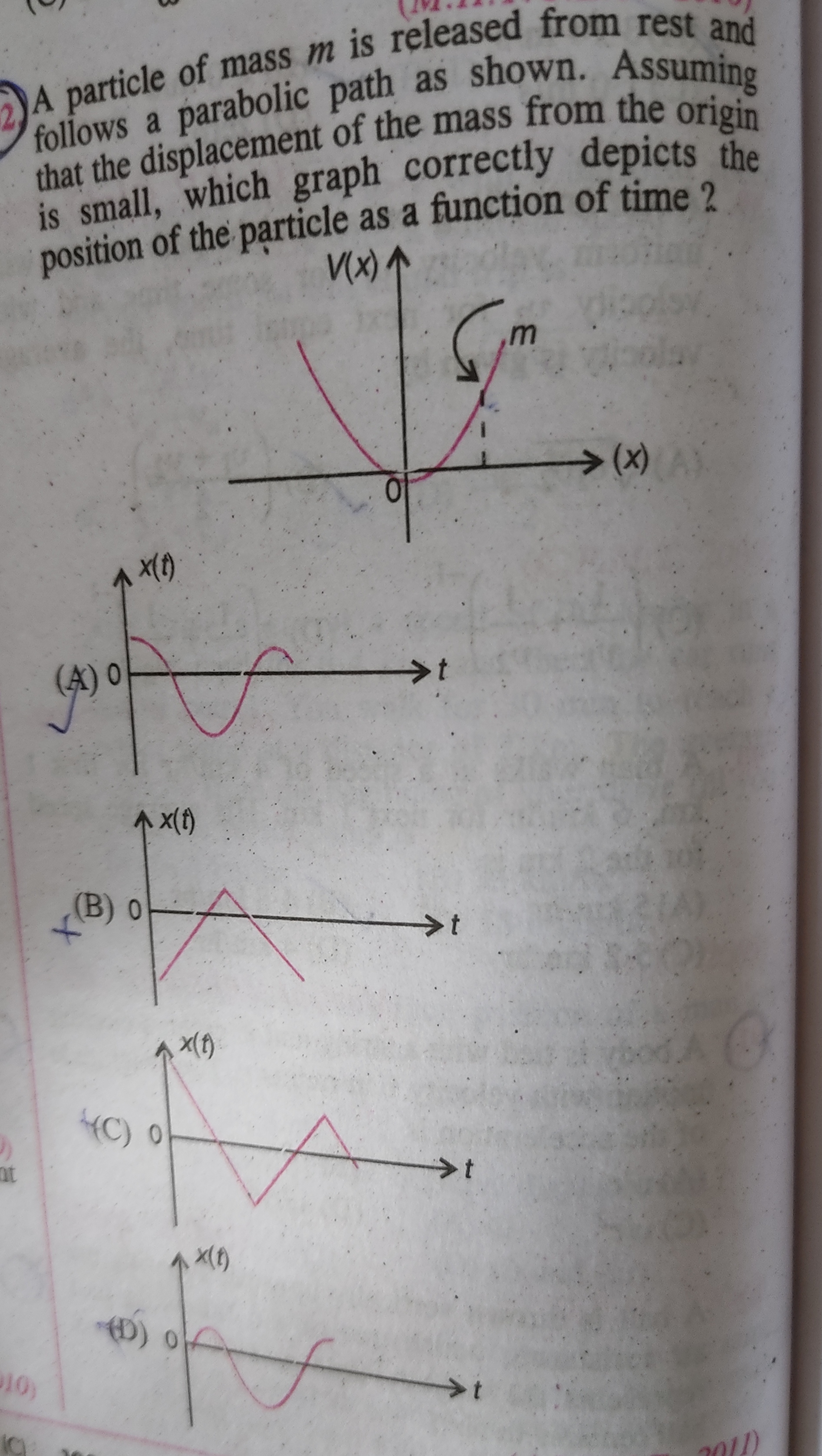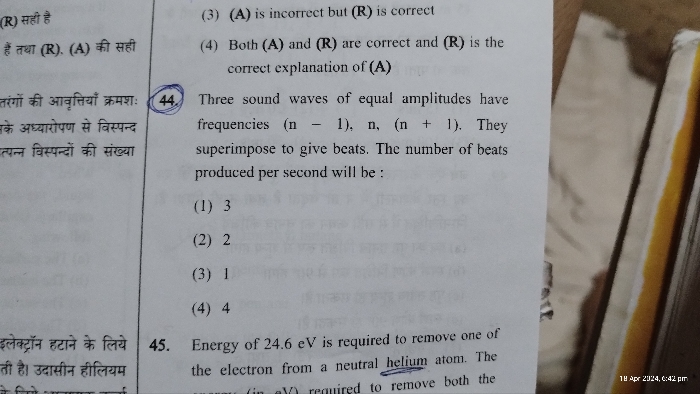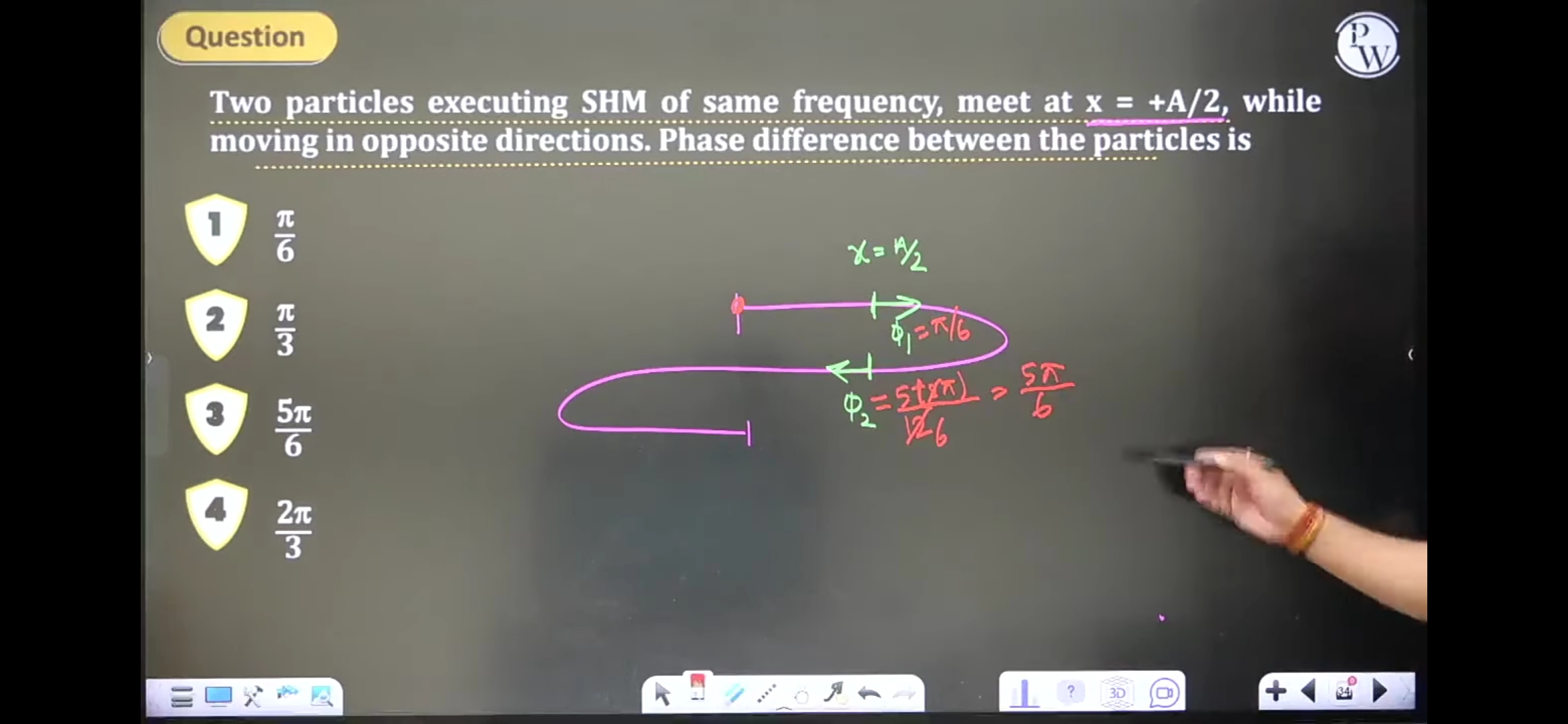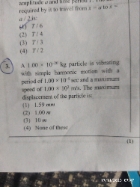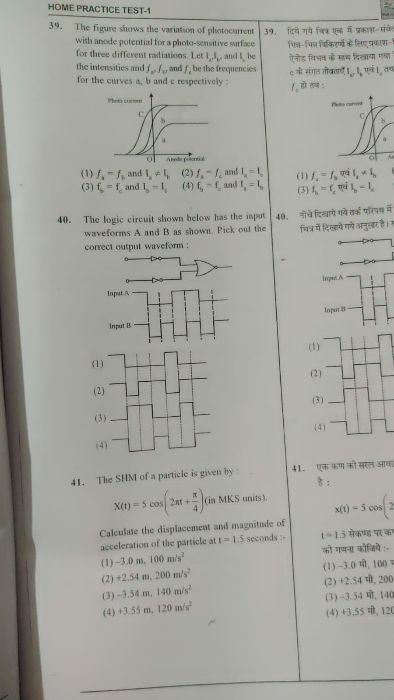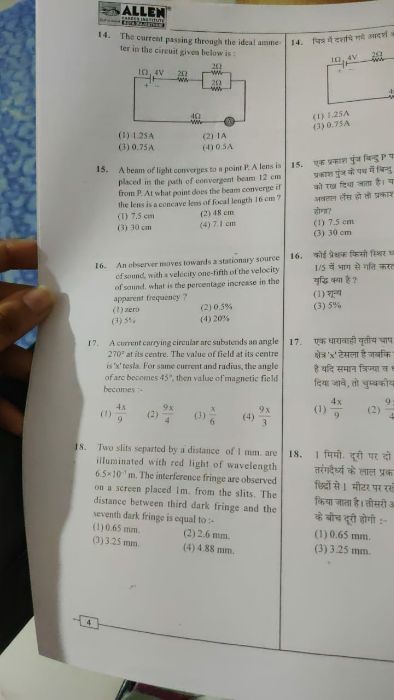Oscillations and Waves
Oscillations and Waves PDF Notes, Important Questions and Synopsis
- Periodic motion: Motion of an object which regularly returns to a given position after a fixed time interval.
- Oscillation:
A special type of periodic motion in which a particle moves to and fro about a fixed point. - Periodic motion may be oscillatory or non-oscillatory:
Motion of a planet around the sun is periodic but not oscillatory. - Amplitude: Maximum displacement of a particle from the mean position.
- Time period: Minimum time taken by a particle to repeat its motion.
- Basic differential equation of SHM:

- Equation of a particle performing SHM

- Velocity of a particle:

Velocity is maximum at the mean position and minimum at the extremes.
Maximum velocity ; minimum velocity v = 0 -
Acceleration of a particle:

Acceleration is maximum at the extremes and minimum at the mean position.
Maximum acceleration ; minimum acceleration a = 0 -
Phase difference:
Same phase SHM

Opposite phase SHM
Relation between phase difference and time difference
-
Energy of a body in SHM:
Total energy of a particle in SHM consists of two parts—kinetic energy (KE) and potential energy (PE). The sum of PE and KE remains constant.
At the mean position, kinetic energy is maximum and potential energy is minimum.
At the extreme position, kinetic energy is zero and potential energy is maximum.
Kinetic energy K

Potential energy U

Total energy = K + U

-
Superposition of two SHMs:
In the same direction and of the same frequency:
In the same direction but of different frequencies:
Resultant motion is not SHM.
In two perpendicular directions,
Case 1: If , the path will be a straight line and the amplitude will be
, the path will be a straight line and the amplitude will be 
Case 2: If , the path will be an ellipse. The resultant motion is not SHM.
, the path will be an ellipse. The resultant motion is not SHM. -
Spring mass system:
Time period of the spring mass system oscillating in the horizontal plane =

Time period of the spring mass system oscillating in the vertical plane =

Series combination of springs
=
Parallel combination of springs
=
Spring cut into two parts in the ratio m:n
-
Oscillation of a two-particle system:
Time period of the blocks

Amplitude of the blocks
-
Simple pendulum:
Time period
=
Time period when the point of suspension is accelerating up=
Time period when the point of suspension is accelerating down =

Time period when the pendulum is accelerating horizontally =

Time period when the pendulum is accelerating down an inclined plane =

-
Physical pendulum:

-
Oscillation of a floating body in a liquid:

 = density of liquid
= density of liquid = density of solid
= density of solid -
Motion of a ball in a tunnel through the earth:

-
Sound waves:
Sound is a mechanical and longitudinal wave created by a vibrating source. It needs a medium for its propagation. In a longitudinal wave, particles of the medium vibrate in the direction of the propagation of the wave. -
In a transverse wave, particles of the medium oscillate along the direction of the propagation of the wave?
-
Wavelength of a progressive wave is the distance between two consecutive points of the same phase at a given time. In a stationary wave, it is twice the distance between two consecutive nodes or antinodes.
-
Speed of sound wave:
Speed of a sound wave depends on elastic and inertial properties of the medium.
-
Speed of sound wave by Newton’s formula:
According to Newton, when sound propagates, the temperature of the gas remains constant. The velocity of sound in air is 280 m/s. -
Laplace’s correction: According to Laplace, heat of the medium remains constant instead of its temperature; therefore, he replaced isothermal elasticity by adiabatic elasticity.

-
Factors affecting the speed of sound in a gas:
Effect of pressure: With a change in pressure, density also changes, and hence, pressure has no effect on the speed of sound in a gas.
Effect of temperature: , with
, with  rise in temperature, the velocity of sound in air increases by 0.61 m/s.
rise in temperature, the velocity of sound in air increases by 0.61 m/s.
Effect of humidity: Speed of sound increases with increase in humidity. -
Intensity of sound wave:
Intensity decreases in proportion to the square of the distance from the source.
-
Doppler effect:
When a source of sound and a listener are in motion relative to each other, the frequency of the sound heard by the listener is not the same as source frequency. The general formula for frequency is . Frequency tends to increase when the source and observer move close to each other and decreases when the source and observer move away from each other.
. Frequency tends to increase when the source and observer move close to each other and decreases when the source and observer move away from each other. -
Principle of superposition of waves:
When two or more waves traverse the same medium, the displacement of any element of the medium is the algebraic sum of the displacement due to each wave.
-
Organ pipe:
Standing waves are the result of interference between longitudinal sound waves travelling in opposite directions. In a pipe open at both ends, the harmonics are given by , whereas for a pipe closed at one end, the harmonics are given by
, whereas for a pipe closed at one end, the harmonics are given by  .
. -
Interference of waves:
Constructive interference: The resultant amplitude is greater than the amplitude of individual waves.
Destructive interference: The resultant amplitude is less than the amplitude of individual waves.
-
Reflection of waves at fixed end and free end:
When a wave gets reflected from a fixed end, it suffers a phase change of π, i.e. it gets inverted.
When a wave gets reflected from a free end, the pulse is not inverted, but the free end overshoots twice the amplitude. -
Standing wave:
The general equation of the standing wave is given by . In standing waves, every element of the medium oscillates in SHM with the same angular frequency ω. The amplitude of SHM of a given element depends on the location x of the element in the medium. -
Characteristics of stationary waves:
Disturbance does not move in any direction.
Minimum displacement points are called nodes, and maximum displacement points are called antinodes.
Amplitude of particles is different at different points.
Particles in a particular segment between two nodes vibrate in the same phase, but particles in neighbouring nodes vibrate in the opposite phase. -
Resonance: When the frequency of the applied force is equal to one of the natural frequencies of the system, the amplitude of the resulting motion is the greatest.
-
Beat:
Periodic variation in amplitude at a given point due to the superposition of two waves having slightly different frequencies.
Beat frequency

-
Sonometer:
A device used to measure the velocity of transverse mechanical waves.
Velocity of a wave in a string is given by

Related Chapters
- Physics and Measurement
- Kinematics
- Laws of Motion
- Work, Energy and Power
- Rotational Motion
- Gravitation
- Properties of Solids and Liquids
- Thermodynamics
- Kinetic Theory of Gases
- Electrostatics
- Current Electricity
- Magnetic Effects of Current and Magnetism
- Electromagnetic Induction and Alternating Currents
- Electromagnetic Waves
- Optics
- Dual Nature of Matter and Radiation
- Atoms and Nuclei
- Electronic Devices
- Communication Systems

